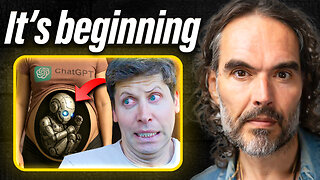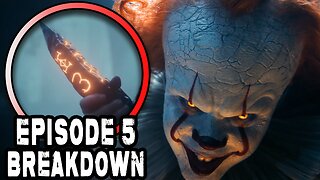Premium Only Content

Six simple steps to increase the testosterone level naturally| Food to boost testosterone #healthy
Symptoms
In males
In females
Causes
Contacting a doctor
Treatment
Naturally boosting testosterone
FAQs
Summary
Low testosterone levels in males can lead to erectile dysfunction. They can also affect sleep, mood, the size of the testicles, and more. In both males and females, low testosterone can lead to lower bone mass and reduced sex drive.
Testosterone is a sex hormone often associated with males, though females have small amounts.
It has many important functions, including:
the development of the bones and muscles
the deepening of the voice, hair growth, and other factors related to appearance
the production of sperm
Testosterone production can slow as a person ages, and many older people experience symptoms of low testosterone.
The American Urology Association defines low testosterone as less than 300 nanograms (ng) of the hormone per deciliter (dl) of blood. The foundation also reports that about 2 in every 100 men have low testosterone.
SUBSCRIBE
What are the symptoms of low testosterone, and how to increase it
Medically reviewed by Joseph Brito III, MD — By Jenna Fletcher — Updated on January 3, 2023
Symptoms
In males
In females
Causes
Contacting a doctor
Treatment
Naturally boosting testosterone
FAQs
Summary
Low testosterone levels in males can lead to erectile dysfunction. They can also affect sleep, mood, the size of the testicles, and more. In both males and females, low testosterone can lead to lower bone mass and reduced sex drive.
Testosterone is a sex hormone often associated with males, though females have small amounts.
It has many important functions, including:
the development of the bones and muscles
the deepening of the voice, hair growth, and other factors related to appearance
the production of sperm
Testosterone production can slow as a person ages, and many older people experience symptoms of low testosterone.
The American Urology Association defines low testosterone as less than 300 nanograms (ng) of the hormone per deciliter (dl) of blood. The foundation also reports that about 2 in every 100 men have low testosterone.
A note about sex and gender
Sex and gender exist on spectrums. This article will use the terms “male,” “female,” or both to refer to sex assigned at birth. Click here to learn more.
Was this helpful?
Symptoms of low testosterone
Bangmaha Art/EyeEm/Getty Images
Below are common signs and symptoms of low testosterone.
Reduced muscle mass
Testosterone plays a role in the development of muscle mass, and reduced levels of the hormone can result in a significant loss of muscle mass.
However, as low testosterone causes a decrease in mass, the function and strength of the muscles do not diminish, according to a 2016 reviewTrusted Source.
Reduced bone mass
Testosterone helps to produce bone tissue and maintain bone volume. Low testosterone can lead to a reduction in this volume, which can make the bones more susceptible to fractures.
Reduced sex drive
People with low testosterone often experience a reduction in sex drive.
A diminishing sex drive occurs naturally with age, but when the cause is low testosterone, a male will notice a significant decrease in the desire for sex.
A decrease in energy levels
Low testosterone can lead to reduced levels of energy and fatigue.
A person may feel tired, even after adequate rest, or develop a diminished interest in exercise or movement.
An increase in body fat
A reduction in testosterone can lead to an increase in body fat.
In some cases, people with a deficiency of the hormone develop gynecomastia, which causes an enlargement of the breasts.
Hair loss
Many people experience hair loss as a natural part of aging, and age-related hair loss can also affect anyone.
Authors of an older study from 2012Trusted Source found that testosterone implants supported hair regrowth in some women receiving treatment for symptoms of sex hormone deficiency.
Symptoms of low testosterone in males
Males may experience specific symptoms of low testosterone levels.
Problems with erections
Low testosterone can make it difficult to achieve or maintain erections. However, low testosterone itself is not always a direct cause of erectile dysfunction. People with high testosterone levels can find it difficult to achieve erections, and people with low levels the opposite.
Testosterone stimulates the penile tissues to produce nitric oxide, which starts several reactions that result in an erection. If levels of the hormone are too low, a man may not be able to get an erection.
Other factors that can cause erectile dysfunction include:
smoking
thyroid-related issues
high cholesterol
stress or anxiety
alcohol consumption
diabetes
high blood pressure
Studies show that testosterone replacement therapy can improve erectile functionTrusted Source in people with mild erectile dysfunction.
Reduction in testicle size
A male with low testosterone may notice a reduction in the size of their testicles that is not related to cold temperatures.
The scrotum may also feel softer than usual.
Reduction in the amount of semen
Semen is the fluid that makes up the majority of male ejaculate. This type of fluid helps the sperm move toward the egg.
Testosterone helps stimulate the production of semen, and reduced semen levels can indicate a reduction in testosterone. It can also lead to fertility issues.
Difficulty sleeping
People with low testosterone may find it difficult to fall or stay asleep.
Low testosterone levels are common in men who have sleep apnea. This potentially severe disorder causes a person to temporarily stop breathing, which can disrupt sleep.
Changes in mood or mood swings
Some evidence suggests that people with low testosterone levels are likely to experience a lack of focus, irritability, and depression.
One 2017 reviewTrusted Source found that testosterone replacement therapy significantly improved depression symptoms and overall quality of life in those with low testosterone.
-
 25:43
25:43
Russell Brand
1 day agoThis Is Getting Out Of Hand
29.6K44 -
 LIVE
LIVE
The Quartering
7 hours agoThanksgiving Day Yule Log!
7,031 watching -
 LIVE
LIVE
The White House
1 hour agoPresident Trump Participates in a Call with Service Members
980 watching -
 7:45
7:45
Colion Noir
1 day agoThey Made Glock “Unconvertible” To Please Politicians, Guess What The Internet Did?
4.07K19 -
 24:55
24:55
Jasmin Laine
1 day agoCarney BRAGS About ‘Investment’—Poilievre Drops a FACT That Stops the Room
2.11K11 -
 23:42
23:42
The Kevin Trudeau Show Limitless
1 day agoThe Brotherhood’s Ancient Mirror Code Revealed
7.29K6 -
 11:21
11:21
Degenerate Jay
1 day ago $4.02 earnedSilent Hill's New Movie Could Be A Bad Idea...
14.5K3 -
![[Ep 801] Dems Setup & Disgusting Response to DC Tragedy | Giving Thanks With Rush](https://1a-1791.com/video/fwe2/79/s8/1/2/t/F/D/2tFDz.0kob-small-Ep-801-Dems-Setup-and-Disgu.jpg) LIVE
LIVE
The Nunn Report - w/ Dan Nunn
4 hours ago[Ep 801] Dems Setup & Disgusting Response to DC Tragedy | Giving Thanks With Rush
52 watching -
 20:23
20:23
Neil McCoy-Ward
6 hours ago🚨 She Wasn’t Ready for This (TOTAL PUBLIC HUMILIATION!)
22.7K12 -
 18:46
18:46
ThinkStory
1 day agoIT: WELCOME TO DERRY Episode 5 Breakdown, Theories, & Details You Missed!
23.3K